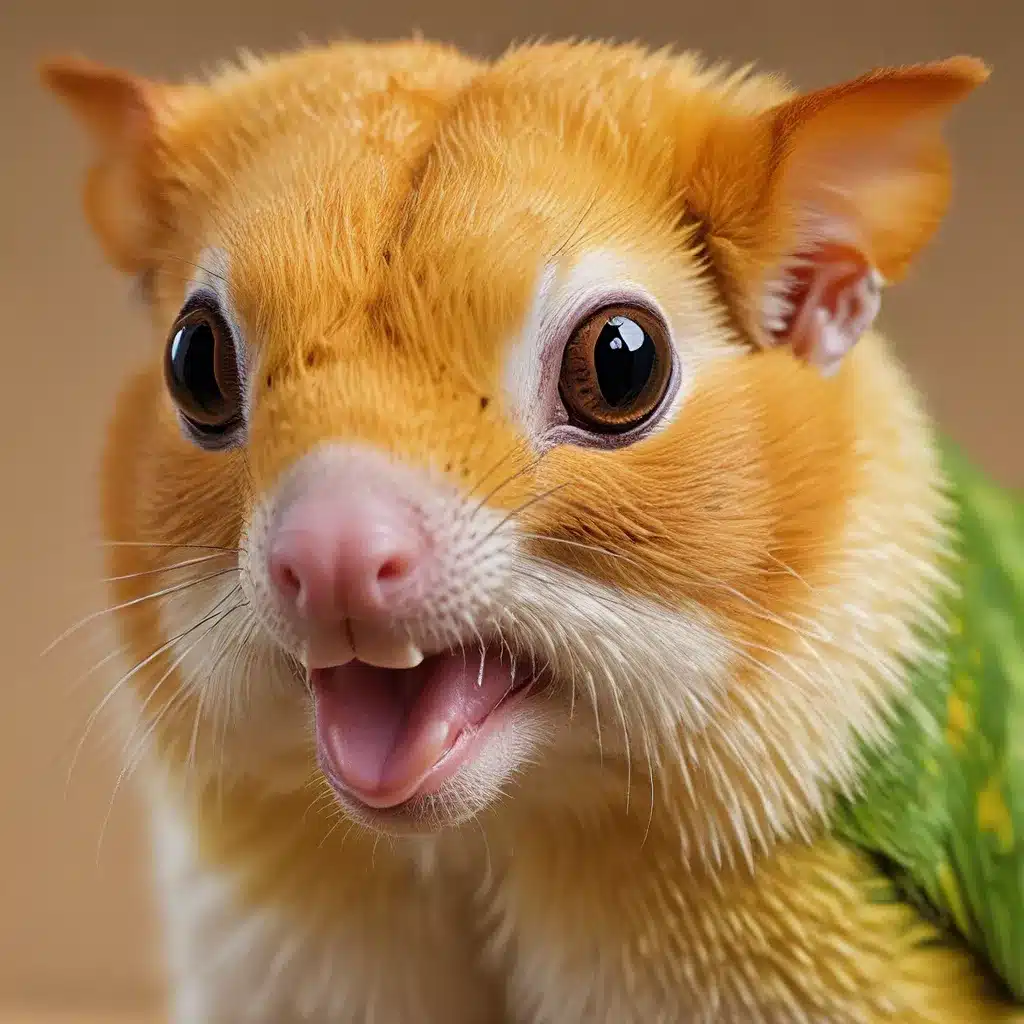
Ah, the joys and challenges of owning an exotic pet! These fascinating creatures may not speak our language, but they have a whole universe of communication waiting to be discovered. As an exotic pet enthusiast myself, I’ve learned that deciphering their body language and vocalizations is the key to building a truly fulfilling relationship with our non-traditional companions.
The Coyote Conundrum: Mastering the “Wild” Tongue
Let’s start with our canine friends, shall we? If you’re brave enough to welcome a pet coyote into your life, then you, my friend, have your work cut out for you. These sly, misunderstood creatures may look like a furry version of man’s best friend, but make no mistake – they are wild at heart.
As the experts at Exotic Pet Wonderland explain, coyotes have not been domesticated like dogs, so their communication cues can be vastly different. But fear not, with a little practice, you can become fluent in the language of the “wild child.”
One of the most important things to understand is that coyotes use their body language to convey a wide range of emotions – from pure joy to outright aggression. For example, did you know that a coyote with its ears laid back isn’t necessarily angry? Nope, that’s just their way of saying, “Hey, let’s play!” On the other hand, if you see a coyote with a heavily arched back, lowered head, and tail down, that’s a clear sign to back off, my friend. An attack is imminent.
And let’s not forget about those adorable facial expressions! A wide-eyed, big-smiled coyote is one happy pup, while a jaw-gaping, ears-flattened individual is feeling scared and uncertain. Paying attention to these subtle nuances can mean the difference between a blissful cuddle session and an unpleasant trip to the ER.
Feathered Friends and Their Fascinating Lingo
Now, let’s shift our focus to our avian companions, who have a whole different set of communication tools at their disposal. As the experts at Chewy explain, birds may not be able to carry on a full-blown conversation, but their body language and vocalizations are nothing short of a masterclass in self-expression.
One of the most captivating behaviors is eye pinning, where a bird’s pupils rapidly dilate and constrict. This can be a sign of excitement, stress, or even interest in you – their favorite person, of course! And let’s not forget about the ever-so-emotive head bobbing and head shaking. While the former can indicate everything from seeking attention to trying to see better, the latter could be a red flag for illness.
But the real showstoppers when it comes to avian communication are the vocalizations. From a deep, rumbling growl to a high-pitched scream or squawk, our feathered friends have a whole repertoire of sounds to express their feelings. And don’t even get me started on the beak clicking and beak grinding – these self-soothing behaviors are the auditory equivalent of a content cat’s purr.
Guinea Pigs and the Art of Rodent Rhetoric
Now, let’s turn our attention to those adorable guinea pigs. These furry little creatures may seem like the quiet type, but as The Spruce Pets explains, they’ve got a whole language of their own that we need to master.
One of the most distinctive guinea pig vocalizations is the wheek, which can range from a soft, content murmur to a loud, excited squeal. These little guys use this sound to communicate everything from “Hey, where’s my dinner?” to “Let’s have a party!” And don’t forget about the chutting – a deep, rumbling sound that’s often a sign of contentment.
But it’s not all about the noises; guinea pigs also have a rich body language that we need to pay attention to. A raised head and alert posture could mean they’re feeling curious and engaged, while a flattened body and tucked-in head might indicate fear or stress. And let’s not forget about those adorable popcorning leaps – a surefire sign that your guinea pig is having the time of their life!
Unlocking the Secrets of Exotic Pet Communication
Whew, that’s a lot of information to digest, isn’t it? But trust me, decoding the communication of our exotic pets is a journey worth embarking on. Not only will it deepen the bond between you and your furry (or feathery) friend, but it can also be the key to keeping them happy, healthy, and safe.
So, where do you start? Well, the first step is to observe, observe, observe. Pay close attention to your pet’s body language, vocalizations, and overall behavior, and try to connect the dots. Is that tail wag a sign of excitement, or is your coyote feeling a little possessive? When your bird starts flapping their wings, are they just feeling playful, or is there something more serious going on?
And don’t be afraid to ask the experts! Reach out to veterinarians, experienced exotic pet owners, and reputable online resources like Golden Exotic Pets to get the lowdown on your pet’s unique communication style. The more you learn, the better equipped you’ll be to provide the love, care, and enrichment that your special companion deserves.
Remember, our exotic pets may not speak our language, but they have a whole world of expression waiting to be discovered. So, grab your translating hat, sharpen your observational skills, and get ready to embark on an exciting journey of interspecies communication. Who knows, you might just become fluent in the “wild tongue” before you know it!

